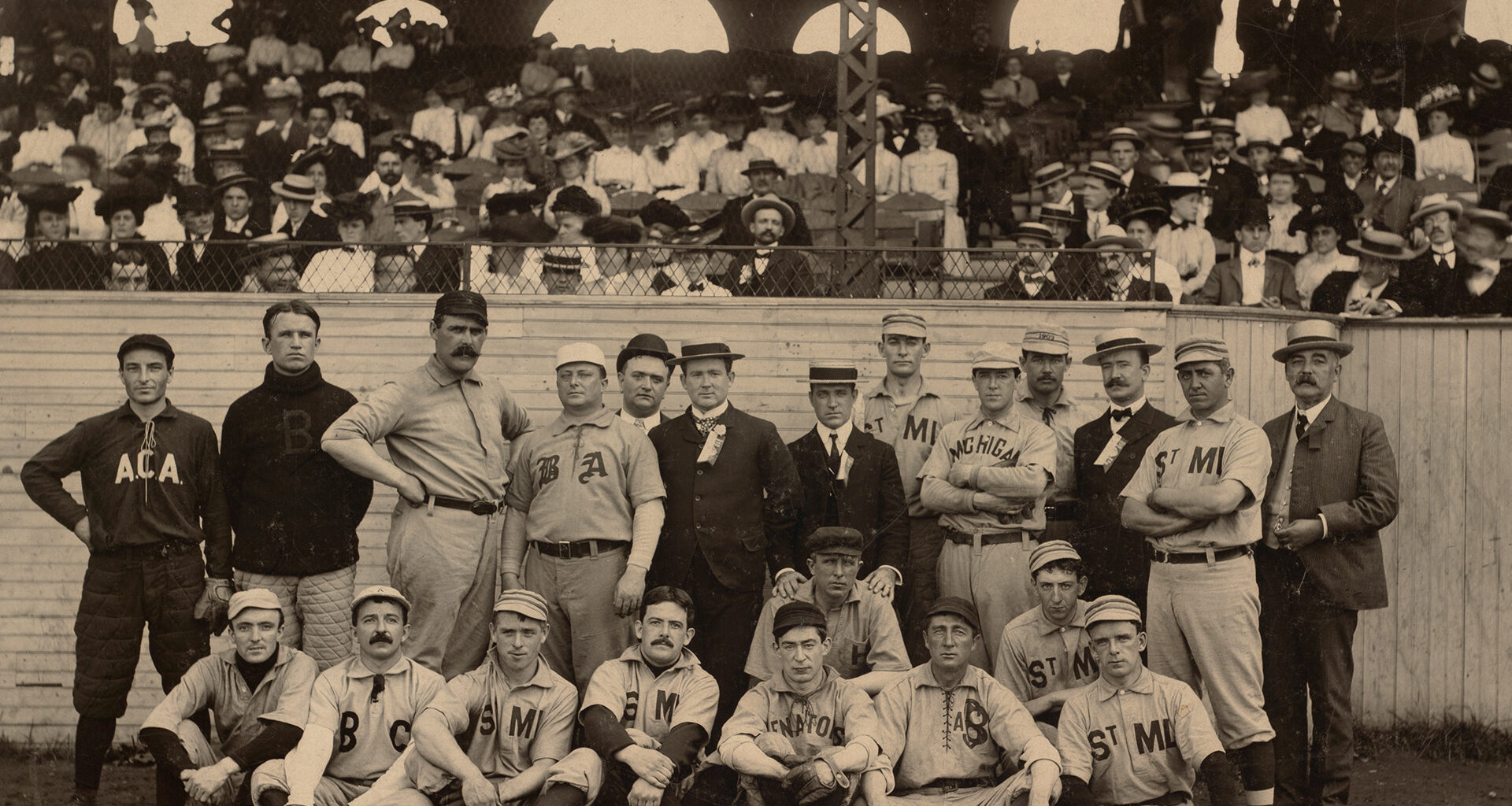It’s like Leo Durocher, professional baseball player, manager, and coach once opined, “Baseball is like church. Many attend, few understand.” Sports fan loyalty is like that too.
Someone once said baseball is the only game where a sacrifice is really appreciated. OK, I said it. So, I hope Major League Baseball appreciates how fans sacrifice too. Or have since the coronavirus pandemic began. Rescheduled seasons all got squeezed into the second half of 2020. “Regular-season” games were played in front of cardboard cutouts. Piped in crowd sounds. That’s not the way it’s supposed to be. Baseball (along with the NBA, NFL, and NHL) suffered viewership declines last year.
One explanation for the declines was wear-out-from-sheltering-in-in-front-of a-TV-or-computer-screen-for-a-year. Also, the sudden surge of professional sports was simply too much at once. The suspension of, well, virtually everything from mid-March last year left leagues and sporting events scrambling to broadcast in the same timeframe. That put all major league sports in the position of competing with one another for eyeballs. That’s when you want fan loyalty to kick in. But it’s like Leo Durocher, professional baseball player, manager, and coach once opined, “Baseball is like church. Many attend, few understand.” Fan loyalty is like that too.
We devised our Brand Keys’ Sports Fan Loyalty Index to help sports teams identify precise fan loyalty levels. And the reasons for them. Then to diagnostically manage them. Or better manage them. Real sports fan loyalty correlates very highly with viewership and merchandise sales. Loyal fans are six times more likely to watch your team play as well as buy team-licensed apparel and gear. Win-loss ratios are fine, but there are emotionally-based loyalty drivers teams need to take into account when it comes to their fans, and not take them for granted. Fans or loyalty drivers.
Take a look at the scorecard below. If it helps, think of it as a loyalty version of baseball’s WAR statistics. (That stands for “wins above replacement” and is used to see a players overall contribution to the team.) Our percentages indicate the contribution each loyalty driver makes in today’s pandemically-modified arena where leagues currently vie for fan loyalty:
- History and Tradition (31%): Is the game and the team part of family, community, and ‘tribal’ beliefs?
- Fan Bonding (29%): Are players especially respected and admired?
- Pure Entertainment (22%): Here’s where you find win-loss ratios, but more importantly, how entertaining is play? Is it a consistent experience year-to-year?
- Authenticity (18%): How well – and how unified – do they play, and does it involve skill and strategy?
This year Opening Day was April 1st. No fooling. Or not entirely fooling. It was the first time fans returned to ballparks since the pandemic began. But stadia capacities have been handicapped. Protocols varied for each of the 30 MLB teams, with the average permissible capacity at 27.9%. Which might seem small, but given fan loyalty levels of some MLB teams, I’m pretty sure they’d be happy to fill that many seats! Really. Have you ever been to a Marlins game?!
Anyway, you may have seen that during the pandemic people turned to adopting pets, baking, binge-viewing, and eating comfort foods as substitutes for major league sports. Oh, and they collected baseball cards too. No really. For some reason, the image of a baseball player on a piece of cardboard became a talisman for times of yore. A return to better times. Simpler times. Normalcy, if you will.
The first baseball cards appeared in the 1860’s and doubled as advertisements. By the early 1900’s, baseball cards were paired with packs of cigarettes. But it was after World War II when mainstream production of baseball cards began in earnest. Topps, the baseball card provider, added a piece of Bazooka bubble gum in 1947. How’s that play as a sensory memory for some of you?
Anyway, collecting baseball cards has seen pretty steady growth over the years. Since the pandemic, the category, as a designated stand-in for major league sports, has been – if you’ll excuse the phrase – on steroids. Topps posted sales of $567 million in 2020 sales, up 23% YOY, and is going public. And expanding its digital collectibles offerings. They’ll trade on the Nasdaq under the ticker TOPP.
The MLB was #1 in loyalty this year (followed by the NBA, NFL, and NHL). Increased passions for collecting baseball cards seems to have correlated highly with fan loyalty assessments. It’s also a return to a paradigm we haven’t seen since the late 1960’s. A time when fans had a declared loyalty to one particular sport versus another. Back then things were more localized and this was waaay before the ubiquity of cable and digital access to all sports all the time.
My Dad was a baseball fan, and I became one too. (I refer you back to the “History & Traditions” loyalty driver above.) We lived in Manhattan and were Giant fans. The New York Giants as they were then. They played at the Polo Grounds. Holidays were a bit difficult because Brooklyn relatives were Dodger fans. They played at Ebbets Field. The Dodgers I mean, not my relatives. But that’s the way it was. Loyalty to one sport (primarily), one team (definitely). Like other kids, I collected baseball cards. I’m pretty sure I never had a really valuable Rookie card, but that was a long time ago. My Mom threw out shoe boxes of them when I went away to college.
Except for three. My Dad had gotten them with some brand of American Tobacco Company cigarettes. They’re cards for the Chicago Cubs infielders Joe Tinker, Johnny Evers, and Frank Chance, the most unforgettable double-play combination in the history of baseball. They were immortalized in an eight-line poem by Franklin Pierce Adams. He was a newspaperman and a New York Giants fan and watched the Chicago Cups infield – Tinker to Evers to Chance – complete a double play that took first place away from his Giants! It’s the second best-known work of baseball verse, right behind “Casey at the Bat.” Interestingly, both poems tell the story of the failure of the home team to win.
It was either UCLA Bruins coach Henry “Red” Sanders or the Packers’ Vince Lombardi (Yeah, I know. Football. But the rules of loyalty apply to all major league sports!) who said, “Winning isn’t everything, it’s the only thing!” Winning games is good but winning fans is better. For any sport. Because while they’re all entertainment options, they’re also business enterprises. Ted Williams (Baseball. Red Sox) noted, “Baseball is the only field of endeavor where s man can succeed three times out of ten and be considered a good performer.”
Teams (in any league) don’t have that luxury. And if they don’t want to get shut out, it’s essential they have loyal fans on their rosters.
 Robert Passikoff is founder and CEO of Brand Keys. He has received several awards for market research innovation including the prestigious Gold Ogilvy Award and is the author of 3 marketing and branding books including the best-seller, Predicting Market Success. Robert is also a frequent contributor to TheCustomer.
Robert Passikoff is founder and CEO of Brand Keys. He has received several awards for market research innovation including the prestigious Gold Ogilvy Award and is the author of 3 marketing and branding books including the best-seller, Predicting Market Success. Robert is also a frequent contributor to TheCustomer.
Photo by Boston Public Library on Unsplash












